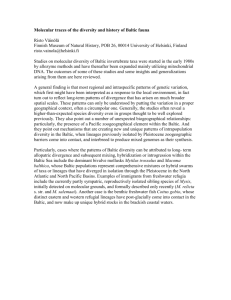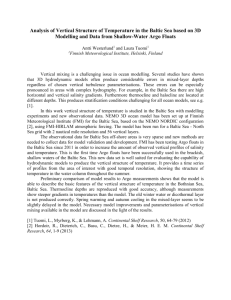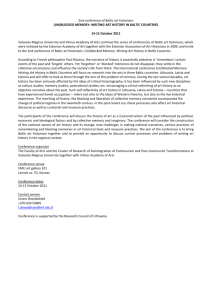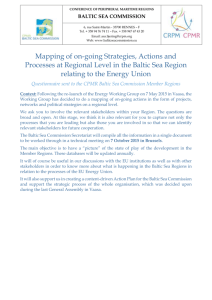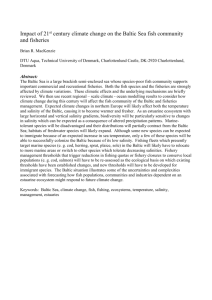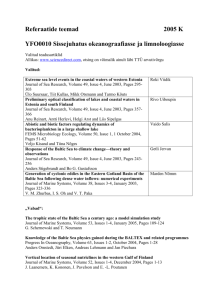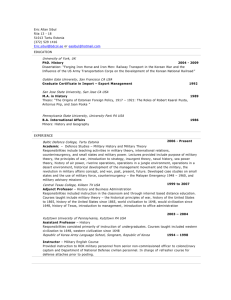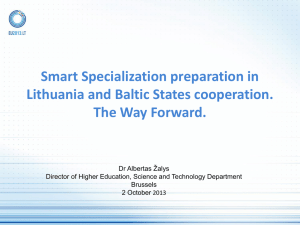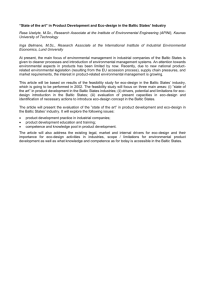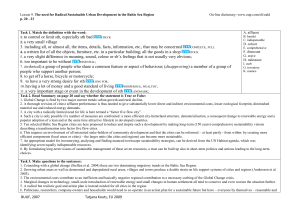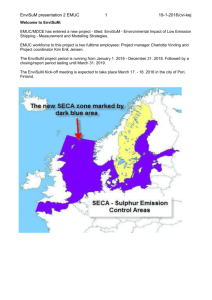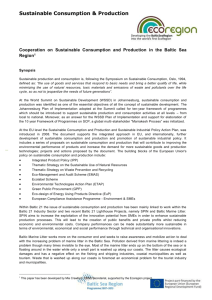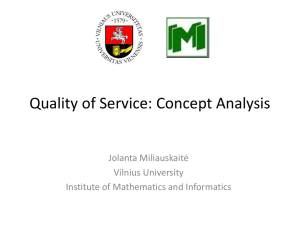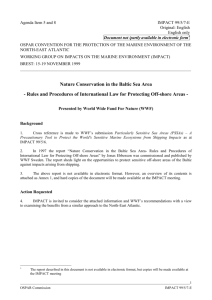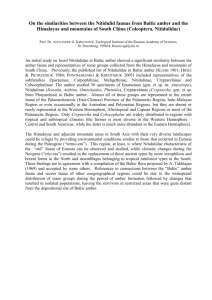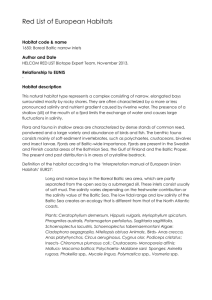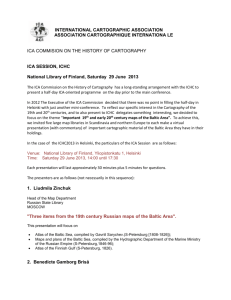ESEA action 13108
advertisement
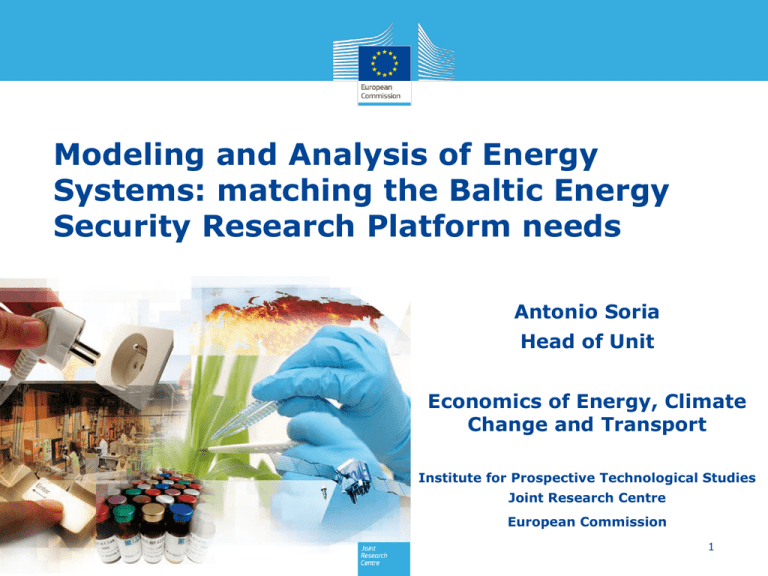
Modeling and Analysis of Energy Systems: matching the Baltic Energy Security Research Platform needs Antonio Soria Head of Unit Economics of Energy, Climate Change and Transport Institute for Prospective Technological Studies Joint Research Centre European Commission 1 Presentation overview I. Scientific support from economic modeling II. Baltic region: current situation, what next ? III. A wider picture: energy supply in Europe IV. Increasing energy connectivity: a priority 2 Our capacity in JRC Provide quantitative assessment of future energy markets under various policy conditions. Series of economic modeling tools : - Dynamics of energy demand and supply - Economics effects - National, regional and global scope - Short to long-term precision Appropriate to address the evolution of energy security indicators under different scenarios (the BESRP scope) 3 Modeling tools and databases involved Economics population: UN, .. Resources Reserves Potentials MAGE (GDP) Energy prices, demand, supply Energy OURSE Green-X POTEnCIA (EU MS): demand, transformation, prices Bio-energy by type/ sector, energy prices CAPRI Wood Potential Feedstock price CBM change and forestry Technology SET-Plan POLES (Global): resources, supply, demand, trade, prices Agriculture Land use GEM-E3 (VA) Potential, cost curve, emissions Non-GHG pollutants GLOBIOM Activity, energy demand GAINS Non-CO2 cost curves Climate Impacts (PESETA, ..) GCMs Climate impacts ETDB The energy sector The JRC is developing and using sector-specific modeling tools: - Global level : POLES - fully operational - World energy system and policies, full energy balances for 57 countries, detailed resources module, international fuel markets, yearly resolution and relying on the most recent data. - Member State level: POTEnCIA – under development - A dedicated EU-wide energy market modelling tool, decomposed on 28 individual Member States, focusing on the structure of demand, supply, prices, emissions, technological change and energy-efficiency measures. 5 The overall economy: 2 examples Scenario Sector-specific model (POLES, POTEnCIA) Technology-specific Increases demand for technology & energy subsidy to energy carrier production Lower average energy costs and higher demand Positive/negative impact on emissions Internalization of environmental externalities Multi-sectoral model (GEM-E3) Improves/worsens trade (depending on the carrier) Substitution between energy and capital/labor Changes in terms of trade of carbon embedding goods Impact on public deficit/consumer prices Energy demand decrease Consumer welfare Energy mix changes changes Autonomous energy CBA possible (including efficiency improves investment costs) Shifts in production factor markets 6 Presentation overview I. Scientific support from economic modeling II. Baltic region: current situation, what next ? III. A wider picture: energy supply in Europe IV. Increasing energy connectivity: a priority 7 Domestic coverage of energy needs 2. Increased role of renewables (EU28: +13% by 2030) Stable in a Reference case 1. Decreased role of domestic fossil fuel production (-9%) * Baltic region: Estonia, Latvia, Lithuania, Poland, Finland, Sweden, Germany, Denmark Questions: - What future economic development and related energy needs? - What role for indigenous resources in supplying these needs? - Integration of the Baltic region in the EU internal market? - How does this translate into external energy supply for the EU? Scenario making for assessment under policy conditions! 8 Presentation overview I. Scientific support from economic modeling II. Baltic region: current situation, what next ? III. A wider picture: energy supply in Europe IV. Increasing energy connectivity: a priority 9 What future supply for Europe? EU faces a shortage of "20th century" energy resources The EU is thus setting up policies: - to develop a highly energy-productive economy fostering renewables, etc… - to make the best of domestic energy resources embracing an ambitious energy efficiency policy However we will still rely on external suppliers: - Design a common EU strategy with regards to external supply? - Implications in terms of political relations? We need to understand the dynamics of energy system at global and regional levels to anticipate our future position so as to better inform policy making. The Baltic region is, in this respect, well aware of the issues at stake 10 Overview I. Scientific support from economic modeling II. Baltic region: current situation, what next ? III. A wider picture: energy supply in Europe IV. Increasing energy connectivity: a priority 11 Existing plans BEMIP: Baltic Energy Market Interconnection Plan - electricity - gas 12 Benefits for Baltic states Baltic countries isolated Key aspects to consider in the interconnection cost/benefit analysis • • • • • • • • Accurate estimation of the investments required Valuing security of supply Equalisation of price signals A more competitive energy market (gas & electricity): oligopolistic rents decrease Clearer, more stable signals for long-term investors Synergies in cross-border buffering capabilities to accommodate renewable excess production. Macroeconomic impact: production factors market Macroeconomic impact: consumer welfare increases 13 Thanks for your attention antonio.soria@ec.europa.eu 14
